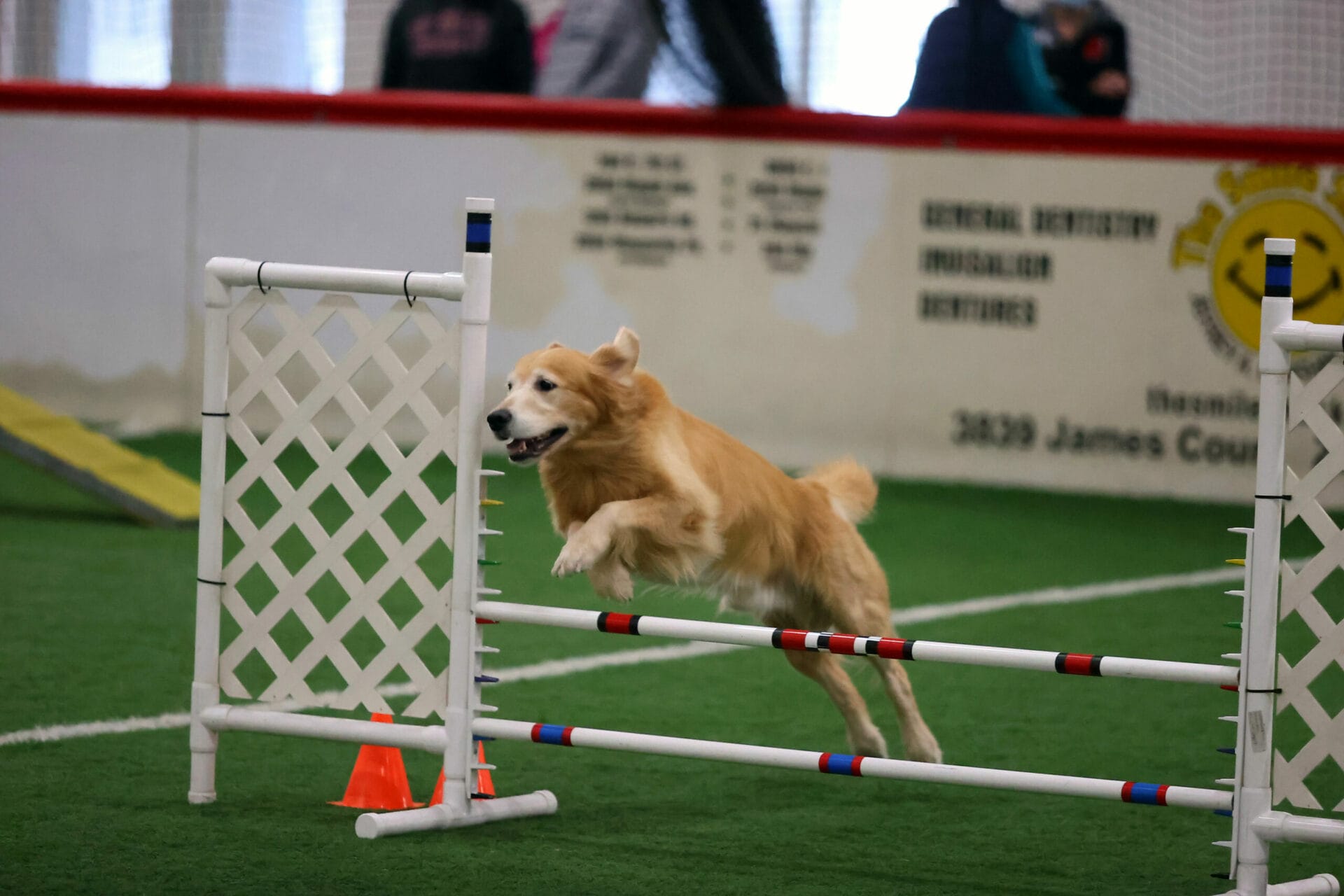
There are some who tout that aggressive or reactive dogs have no place at an agility trial. Many of these individuals never had to deal with a dog that was aggressive or reactive. They blame the dog’s owner, poor breeding, and poor selection of a breeder. While breeding may be the top reason for aggressive dog traits, the owner often has no way of ever knowing that their dog might be one, even if they did due diligence in their pre-buying research.
Consequences of Dog Aggression at Trials
Dog agility trial circuits such as AKC, CPE, and others clearly state that aggressive and reactive dog behavior is not allowed at their competitions.
If a dog is reported or written up at a trial – meaning someone at the trial reported to the trial chair that they wanted to make a formal report of an incident – the consequences usually result in the dog being banned from all future trials. Sometimes that ban is permanent, sometimes it can be imposed for several years and lifted if the owner proves that they had undergone training to prevent future occurrences. Those making the decision on whether to re-admit the dog base it on the likelihood of a bad incident happening again. There’s also a fee to have the case re-reviewed, whether the dog is readmitted or not.
Numerous Reactive Dogs Compete in Trials
There are far more reactive dogs at agility trials than most people realize. Look for covered crates and owners that are adamant that no one touches their dog. Look for dogs that are always crated in their cars. Look for handlers that you either don’t see very often, or that rarely interact with their dogs unless they are running or pottying them. While these things don’t necessarily apply to owners with reactive or aggressive dogs, they are signs.
Despite the consequences, many dog agility competitors still compete at trials with an aggressive or reactive dog. Agility dogs can cost thousands of dollars and owners often cannot afford to go buy another one. Other aggression traits run in the lines they love – great agility dogs but not so friendly to either dogs, people, or both. Still other aggressive dogs are quite small, and despite the fact that the same rules apply, it just never seems as serious when they are smaller. Not fair, but it is true.
Tips to Avoid Dog Reactivity at Agility Trials
Anyone with an aggressive or reactive dog should either already know how to avoid issues at trials or attend training to learn how to avoid those issues. Here are just a few tips or ideas:
- Open doors slowly and back up if someone with a dog is coming out at the same time you are going in.
- Don’t stop and chat to someone if you have your dog with you on leash. Your attention will no longer be on the dog but instead be on the person and something could happen.
- Stop and wait for other dogs to pass by, or before going down a dog-crowded aisle.
- If another dog is on a long leash and coming too close, tell its handler “My dog needs space.”
- Keep your distance from other dogs when waiting your turn to go into the ring. COVID was a Godsend in helping make this happen.
- Put a blanket or partition around your crate if your dog tends to react aggressively when other dogs walk by.
- Crate your dog in the car and only let them inside when its time to run.
- When taking your dog in or out of their crate, look both ways down the aisle to make sure the coast is clear and other dogs are far enough away.
- If there is a chance your dog might show aggression toward the the dog running right after you, let her handler know and ask her to wait until you have your dog on leash before she enters the ring. Some judges will disagree with this one while others appreciate it, so it may get complicated. Listen to the briefing for clues and make a decision on whether you wish to risk an issue if the judge is not amenable.
- The true solution to #9 and one of the top things you can do to help keep everyone safe is to teach the strongest recall possible to your reactive dog.
Always be on the lookout for anything that could set your dog off. Often you won’t see it coming. A dog could stare at your dog and suddenly there’s loud barking and lunging that makes everyone’s head turn.
Training For You and Your Dog is Critical
My reactive dog is now 9 years old. We drove almost 2 hours each way to see Brenda Aloff, renowned dog trainer and behavioralist. She helped me deal with my dog’s behavior and helped him mind me better too. She was extremely helpful.
Brenda told me “I really like him, but if it were my dog, I wouldn’t take him to trials. It just isn’t worth it.” At the time I felt bad, but also was hooked on agility and planned to trial him. She had more dogs than I could dream of with caretakers for them when she was gone. She had the choice of leaving a reactive dog at home while she took other dogs (or more often horses) to compete. I wasn’t in the same situation.
Whatever you do, seek the best training you can afford to learn from and manage your dog. It will make you both a lot happier and keep others safer.
Lessons Learned, Friends & Enemies, Going Forward
I learned how to deal with my reactive dog—sometimes the hard way. I competed with him and still compete to this day. He’s done well, but certainly not nearly as well as he would have done had he not had the reactive issue. Trialing is still a lot more stressful for me than it was when I trialed my other dog. There are still places I won’t trial him because of the ring set up or proximity to other dogs. This includes AKC nationals most years.
I’ve made many friends in agility, but also some enemies as a result of this. I now understand Brenda’s reasoning much more than I did. But I am also glad I know so much about aggressive and reactive dogs. The relationship between my dog and I is much better. And I have a true understanding of other handlers in the same situation. Getting another reactive dog is something I will do my utmost due diligence to prevent again though.
To compete in agility with a reactive dog was something I’m glad I did. But for me, to do it again just isn’t worth it.

Thank you for this. I have a Labrador, who seems to be breed selective in his aggression. My previous dog was a Rottweiler. She was never reactive, not even towards dogs charging at her at trials. So having a so called easy, loving Labrador is really difficult. He is young, only 2.5 years old and I hoping with more training and exposure he’ll be manageable. He is always crated in the car, I keep my distance before entering the ring etc. but just this past weekend did not pay attention and we were surprised by a keeshond, the breed he seems to despise for whatever reason, and he lost it. It was not a surprise reaction. It was a full blown testosterone driven (he is neutered) response. It happened right next to the ring. The judge didn’t say a word. I did scratch him from the rest of the runs. I am truly wondering if I should continue with him. As we all know we all spent thousands to train, but I just don’t want to be on edge at every trial. Sorry for the long and rambling reply. It is just comforting to see someone else going through this